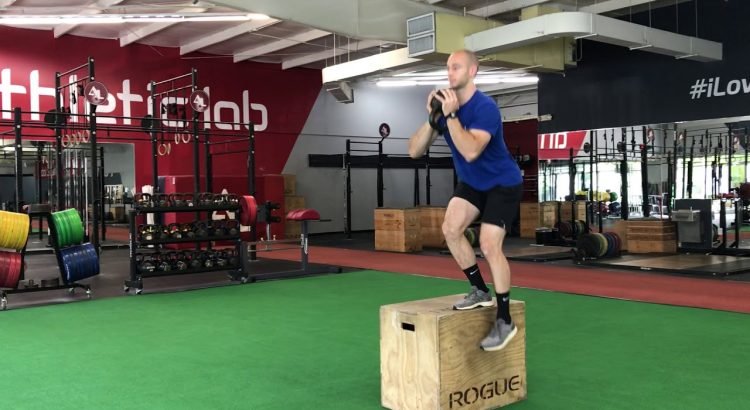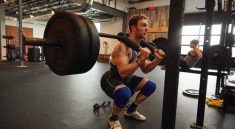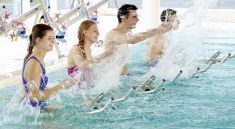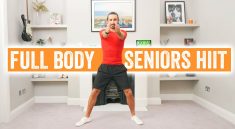Inspa Kyoto – Step-Ups Over Squats continues to gain popularity among fitness professionals and everyday gymgoers alike. This shift in preference stems from a growing recognition that step-ups offer a more balanced, joint-friendly approach to lower body strength. While squats have long been the cornerstone of leg day routines, step-ups provide a more functional movement pattern that mimics real-life tasks like climbing stairs or hiking.
This translates into strength that works outside the gym, not just in it. Additionally, step-ups require greater core stabilization and single-leg strength, helping address muscle imbalances that often go unnoticed. As people focus more on longevity and injury prevention in their training, the appeal of step-ups becomes more evident. The exercise suits all levels of fitness and allows easy progression with height, speed, and resistance. Unlike squats, which can stress knees and lower backs when performed incorrectly, step-ups promote control, coordination, and joint alignment with each repetition.
Why Trainers Choose Step-Ups Over Squats for Functional Power
In many modern programs, trainers recommend Step-Ups Over Squats for clients who want to build power without compromising form or safety. Step-ups demand balance, coordination, and muscle engagement across multiple areas of the body. This movement targets the quadriceps, hamstrings, glutes, and calves while activating the core to maintain posture and control. Because the exercise isolates each leg independently, the body must adapt to shifts in weight and alignment.
This makes step-ups a more dynamic choice than squats, which can sometimes allow the stronger side to dominate. Clients recovering from injuries also benefit, since step-ups reduce spinal compression and allow more control through range of motion. When paired with progressive resistance or higher platforms, step-ups can match the intensity of traditional leg exercises without sacrificing form. This versatility allows trainers to customize the difficulty to meet individual needs. By integrating step-ups, more people can access powerful lower body training without unnecessary strain.
“Read about: SweatPals Redefines Fitness for Gen Z with a Community-First Approach”
Building Strength and Balance with a Single Simple Move
The beauty of the step-up lies in its simplicity and impact. With only a bench or platform and body weight or dumbbells, the entire lower body can be activated effectively. The stepping motion mirrors many daily activities, making it especially useful for older adults or athletes working on functional performance. As each leg works independently, the movement forces balance, knee control, and proper foot positioning. This allows muscles to develop evenly and reduces the risk of overcompensation.
Over time, the repetitive motion builds neuromuscular efficiency, meaning the body becomes more efficient at firing the right muscles in sequence. This translates into better movement, both in and out of training environments. Even at moderate intensities, step-ups challenge cardiovascular endurance and stamina, increasing calorie burn. Unlike many compound exercises that require machines or spotters, step-ups can be performed anywhere with minimal equipment. These factors make it one of the most accessible and beneficial exercises available.
How to Progress Step-Ups Safely and Effectively
As with any exercise, progression is key to continued development. Step-ups allow for clear and simple advancement, starting from basic bodyweight reps to more intense variations. Increasing platform height shifts emphasis to the glutes and hamstrings while adding weights amplifies the load on the working leg. Holding dumbbells at the sides or using a weighted vest are popular methods of increasing difficulty.
Time under tension can also be extended by slowing the upward and downward phases of each rep. Another form of progression includes adding a knee drive at the top for core engagement. Trainers often combine step-ups into supersets or circuits to maintain heart rate and maximize metabolic conditioning. Attention must be given to alignment during each repetition. The entire foot should be placed on the platform and the push should come from the heel to activate the posterior chain. When executed with precision, these simple adjustments can dramatically boost the effectiveness of each workout.
“Read more: Green is Glam: Natural Beauty Products Drive Global Market Surge in 2025”
Integrating Step-Ups into a Weekly Training Routine
Step-ups can be added into routines up to three times per week, depending on volume and intensity. Beginners may start with two sets of six to eight reps per leg while advanced lifters can increase to four sets of twelve or more. The move pairs well with other bodyweight or dumbbell-based exercises such as lunges, glute bridges, or single-leg deadlifts.
Including step-ups on leg day ensures the body gets a unilateral movement that balances muscle development. On lighter days, they can be used for warmups or movement prep. Athletes often integrate them into agility drills or explosive training by adding jumps to the step-up. The movement can also be adapted for rehabilitation programs where limited impact is essential. With thoughtful programming, step-ups can replace squats for those seeking safety, variety, or more targeted control. They offer a reliable and versatile tool for building strong, stable legs that perform in real-world situations.



